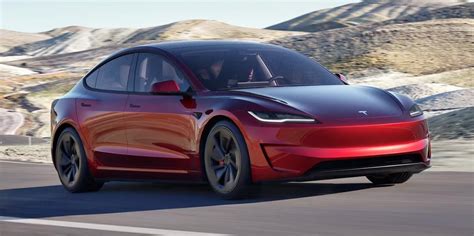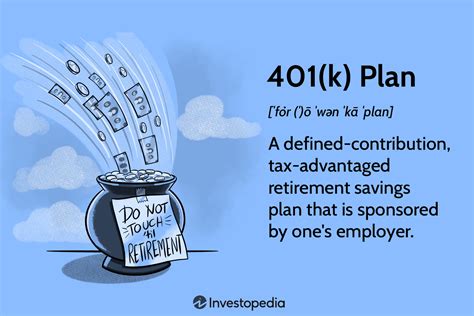
Tesla is aggressively cutting prices and offering incentives on its existing vehicle lineup as sales growth slows, prompting concerns about demand and the aging of its core models. The move comes as Tesla faces increased competition in the electric vehicle market and grapples with production challenges and macroeconomic headwinds.
Tesla is scrambling to boost sales of its current models, like the Model 3 and Model Y, by implementing significant price cuts and other incentives, indicating a potential slowdown in demand for its existing vehicle lineup. These measures are being introduced amid increased competition from established automakers and new entrants in the electric vehicle (EV) sector, compounded by persistent macroeconomic uncertainties.
The electric vehicle giant, known for its premium pricing strategy, has initiated a series of price adjustments across its product range. This decision reflects a shift in Tesla’s approach as it seeks to maintain its market share and attract a broader customer base. Recent data suggests that Tesla’s sales growth, while still positive, is not as robust as in previous years, prompting the company to take proactive steps to stimulate demand. “Tesla is looking at a host of challenges right now,” said Garrett Nelson, a senior equity analyst at CFRA Research.
Price Cuts and Incentives: A Detailed Overview
Tesla’s recent price cuts have been particularly pronounced on its higher-volume models, the Model 3 sedan and the Model Y SUV. These models, which have been the backbone of Tesla’s sales success, have seen their prices reduced by thousands of dollars in some markets. In the United States, for instance, the starting price of the Model 3 has been lowered to a more competitive level, making it more accessible to a wider range of consumers. Similarly, the Model Y, a popular choice among SUV buyers, has also experienced significant price reductions.
In addition to outright price cuts, Tesla is offering a range of incentives to further incentivize purchases. These incentives include:
- Financing Options: Tesla is providing attractive financing options with lower interest rates and extended loan terms, making it easier for customers to afford its vehicles.
- Trade-In Bonuses: Customers who trade in their existing vehicles for a new Tesla are eligible for trade-in bonuses, which can significantly reduce the overall cost of the purchase.
- Referral Programs: Tesla’s referral program rewards existing owners for referring new customers, providing both the referrer and the new buyer with benefits such as free Supercharging miles or discounts on accessories.
- Software and Feature Bundles: In some instances, Tesla is bundling advanced software features, such as Full Self-Driving (FSD) capability, with vehicle purchases at a reduced price, adding value for customers.
These incentives are designed to make Tesla vehicles more appealing to potential buyers who may have been hesitant due to price concerns. By lowering the barrier to entry, Tesla hopes to reignite demand and maintain its sales momentum.
Reasons Behind the Sales Strategy Adjustment
Several factors are contributing to Tesla’s decision to adjust its sales strategy. These include:
- Increased Competition: The EV market is becoming increasingly crowded, with established automakers like General Motors, Ford, and Volkswagen launching their own electric models. These competitors are offering a wider range of options to consumers, putting pressure on Tesla’s market share.
- Aging Product Lineup: While Tesla’s vehicles remain technologically advanced, the Model 3 and Model Y have been on the market for several years. Consumers may be looking for newer models with updated features and designs.
- Production Challenges: Tesla has faced production challenges in the past, which have limited its ability to meet demand. While the company has made progress in increasing production capacity, it still faces occasional bottlenecks.
- Macroeconomic Factors: The global economy is facing a number of challenges, including inflation, rising interest rates, and supply chain disruptions. These factors are impacting consumer spending and making it more difficult for companies to sell their products.
- Consumer Sentiment: High interest rates and inflation are dampening consumer sentiment and making people hesitant to make large purchases, such as cars. This broader economic trend is affecting the entire auto industry, but Tesla is particularly vulnerable due to its premium pricing.
Impact on Tesla’s Financial Performance
The price cuts and incentives are likely to have a negative impact on Tesla’s financial performance. Lower prices mean lower profit margins, which could reduce the company’s overall profitability. However, Tesla may be willing to sacrifice some profitability in the short term to maintain its sales volume and market share.
Analysts are closely watching Tesla’s financial results to see how the price cuts are affecting the company’s bottom line. Some analysts believe that Tesla can offset the impact of lower prices by increasing production efficiency and reducing costs. Others are more concerned about the long-term implications of the price cuts on Tesla’s brand image and pricing power.
Analysts’ Perspective
Industry analysts have offered various perspectives on Tesla’s recent moves. Some see it as a necessary adaptation to the changing market landscape, while others view it as a sign of potential challenges ahead.
Gene Munster, managing partner at Deepwater Asset Management, has pointed out that while Tesla’s gross margins are expected to decrease, the company is strategically prioritizing market share, according to Barron’s. “Tesla has decided that growth is more important than margins,” Munster said.
On the other hand, some analysts express concerns about the long-term implications of continuous price reductions on Tesla’s brand image and profitability. The risk is that frequent price cuts could devalue the brand in the eyes of consumers and erode Tesla’s premium positioning.
Tesla’s Response and Future Outlook
Tesla has acknowledged the challenges it faces and has outlined its plans to address them. The company is focused on:
- Introducing New Models: Tesla is developing new models, such as the Cybertruck and a next-generation compact car, to expand its product lineup and appeal to a wider range of customers.
- Increasing Production Capacity: Tesla is continuing to invest in its manufacturing facilities to increase production capacity and reduce costs. The company is also exploring new manufacturing technologies to improve efficiency.
- Expanding its Charging Infrastructure: Tesla is expanding its Supercharger network to make it easier for customers to charge their vehicles. The company is also working with third-party charging providers to increase the availability of charging stations.
- Investing in Research and Development: Tesla is continuing to invest in research and development to develop new technologies and improve the performance of its vehicles. The company is also exploring new business opportunities, such as energy storage and solar power.
Tesla’s future success will depend on its ability to navigate the challenges it faces and execute its plans effectively. The company remains a leader in the EV market, but it faces increasing competition and must continue to innovate to maintain its position.
The company’s strategy involves not only price adjustments but also a renewed focus on customer service and satisfaction. Tesla aims to improve the overall ownership experience to retain existing customers and attract new ones. This includes streamlining the purchasing process, enhancing service support, and providing more personalized customer interactions.
Tesla’s Dominance in the EV Market
Despite the growing competition, Tesla remains the dominant player in the EV market. The company has a strong brand reputation, a loyal customer base, and a technological lead over many of its competitors.
In 2023, Tesla delivered approximately 1.81 million vehicles, marking a significant increase from the previous year. This demonstrates the company’s ability to scale its production and meet growing demand, solidifying its position as the leading EV manufacturer.
Tesla’s Supercharger network is a key competitive advantage. With thousands of Supercharger stations located around the world, Tesla owners have access to a convenient and reliable charging infrastructure. This makes it easier for people to switch to electric vehicles and reduces range anxiety, a major concern for potential EV buyers.
Tesla’s Autopilot and Full Self-Driving (FSD) technologies are also a major selling point for many customers. While these technologies are not yet fully autonomous, they offer a range of advanced driver-assistance features that can improve safety and convenience. Tesla is continuing to develop and improve its autonomous driving capabilities, which could give it a significant edge over its competitors in the future.
The Impact on the EV Industry
Tesla’s price cuts are having a ripple effect on the entire EV industry. Other automakers are being forced to lower their prices to compete with Tesla, which is making electric vehicles more affordable for consumers.
The increased competition is also driving innovation in the EV market. Automakers are investing heavily in research and development to develop new technologies and improve the performance of their electric vehicles. This is leading to faster charging times, longer ranges, and lower prices.
The EV industry is expected to continue to grow rapidly in the coming years, driven by government incentives, growing consumer awareness, and technological advancements. Tesla is well-positioned to benefit from this growth, but it will need to continue to innovate and adapt to the changing market landscape.
The Cybertruck’s Role
The impending release of the Cybertruck is a key factor in understanding Tesla’s current strategic maneuvering. Tesla aims to diversify its product lineup and address different market segments. The Cybertruck, with its distinctive design and capabilities, is expected to attract a new segment of customers who may not have been interested in Tesla’s existing models.
The Cybertruck’s production ramp-up is also a consideration. Tesla is working to scale up production of the Cybertruck to meet anticipated demand. The company’s experience in scaling production of the Model 3 and Model Y will be valuable in this effort, but the Cybertruck’s unique design and manufacturing process may present new challenges.
The Cybertruck is not just a new vehicle; it is a statement of Tesla’s innovation and ambition. Its success will depend on Tesla’s ability to deliver on its promises and meet the expectations of its customers.
Tesla Energy: A Growing Business
While Tesla is best known for its electric vehicles, the company also has a growing energy business. Tesla Energy offers a range of products and services, including:
- Solar Panels: Tesla manufactures and installs solar panels for residential and commercial customers.
- Powerwall: Tesla’s Powerwall is a home battery system that stores solar energy and provides backup power during outages.
- Megapack: Tesla’s Megapack is a large-scale battery system for utility companies and commercial customers.
- Virtual Power Plants: Tesla is developing virtual power plants, which aggregate distributed energy resources, such as solar panels and batteries, to provide grid services.
Tesla Energy is playing an increasingly important role in the transition to sustainable energy. The company’s products and services are helping to reduce reliance on fossil fuels and create a more resilient and reliable energy grid.
The Future of Transportation
Tesla is at the forefront of the future of transportation. The company’s electric vehicles, autonomous driving technology, and energy solutions are transforming the way people move and live.
Tesla’s vision is to accelerate the world’s transition to sustainable energy. The company believes that electric vehicles are the key to reducing greenhouse gas emissions and improving air quality. Tesla is also working to develop autonomous driving technology that will make transportation safer and more efficient.
Tesla’s impact extends beyond the automotive industry. The company is also inspiring other companies to invest in electric vehicles and sustainable energy. Tesla’s success is demonstrating that it is possible to build a profitable and sustainable business that benefits both people and the planet.
Broader Economic Context
The decisions made by Tesla are also influenced by the broader economic conditions. Factors such as inflation, interest rates, and supply chain disruptions can significantly impact consumer behavior and the automotive industry as a whole.
Inflation, for example, can erode consumer purchasing power, making it more difficult for people to afford large purchases such as cars. High interest rates can also make financing more expensive, further dampening demand.
Supply chain disruptions, such as the global chip shortage, can limit production and increase costs. These challenges can make it more difficult for automakers to meet demand and maintain profitability.
Tesla, like other companies, is navigating these economic challenges by adjusting its strategies and adapting to the changing market conditions. The company’s ability to effectively manage these challenges will be a key factor in its long-term success.
Tesla’s move to cut prices and offer incentives highlights the dynamic nature of the EV market. As competition intensifies and the technology evolves, Tesla must continue to adapt and innovate to maintain its leadership position. The company’s future success will depend on its ability to navigate these challenges and deliver compelling products and services that meet the needs of its customers.
Global Expansion and Market Penetration
Tesla’s global expansion strategy is crucial in understanding its current pricing tactics. The company is aggressively expanding its presence in key markets such as China and Europe, where demand for electric vehicles is growing rapidly.
In China, Tesla has established a Gigafactory in Shanghai, which has significantly increased its production capacity and reduced its costs. This has allowed Tesla to offer more competitive prices in the Chinese market and gain market share.
In Europe, Tesla is expanding its Supercharger network and investing in new manufacturing facilities. The company is also working with governments and local partners to promote the adoption of electric vehicles.
Tesla’s global expansion strategy is not without its challenges. The company faces competition from local automakers, regulatory hurdles, and cultural differences. However, Tesla is committed to building a global brand and becoming a leader in the electric vehicle market worldwide.
The Raw Materials Supply Chain
The availability and cost of raw materials, such as lithium, nickel, and cobalt, are critical factors in the electric vehicle industry. These materials are essential for the production of batteries, which are the most expensive component of an electric vehicle.
Tesla is working to secure its supply of raw materials by investing in mining operations and forming partnerships with raw material suppliers. The company is also exploring alternative battery chemistries that use less expensive and more readily available materials.
The raw materials supply chain is subject to volatility and geopolitical risks. Disruptions in the supply of raw materials can lead to higher prices and production delays. Tesla is taking steps to mitigate these risks and ensure a stable supply of raw materials for its battery production.
Tesla’s Software and Technology Ecosystem
Tesla’s competitive advantage extends beyond its electric vehicles. The company has developed a sophisticated software and technology ecosystem that enhances the ownership experience and provides a range of services to its customers.
Tesla’s software ecosystem includes:
- Autopilot: Tesla’s Autopilot is an advanced driver-assistance system that provides features such as adaptive cruise control, lane keeping assist, and automatic emergency braking.
- Full Self-Driving (FSD): Tesla’s Full Self-Driving (FSD) capability is a suite of features that aims to provide full autonomous driving in the future.
- Over-the-Air Updates: Tesla provides over-the-air software updates that improve the performance and functionality of its vehicles.
- Mobile App: Tesla’s mobile app allows customers to control and monitor their vehicles remotely, including features such as climate control, charging, and security.
Tesla’s software and technology ecosystem is a key differentiator that sets it apart from its competitors. The company is continuously innovating and adding new features to its software platform, which enhances the value of its vehicles and provides a superior ownership experience.
The integration of software and hardware is a defining characteristic of Tesla’s approach. The company designs its own chips and develops its own software, which allows it to optimize the performance of its vehicles and create a seamless user experience.
Regulatory and Policy Landscape
Government regulations and policies play a significant role in the electric vehicle market. Incentives such as tax credits and subsidies can encourage consumers to purchase electric vehicles, while regulations such as emissions standards can drive automakers to produce more electric vehicles.
Tesla has benefited from government incentives in many markets around the world. The company is also working with governments to develop policies that support the growth of the electric vehicle industry.
The regulatory and policy landscape is constantly evolving, and Tesla must adapt to these changes to remain competitive. The company is actively engaged in lobbying and advocacy efforts to shape policies that promote the adoption of electric vehicles.
FAQ: Frequently Asked Questions about Tesla’s Sales Strategy
Q1: Why is Tesla cutting prices on its vehicles?
A1: Tesla is cutting prices to boost sales amidst increased competition in the EV market and potential slowing demand for its existing models. The price cuts and incentives aim to make Tesla vehicles more attractive to a broader range of customers, addressing concerns about affordability and the aging of its core models like the Model 3 and Model Y.
Q2: What specific incentives are being offered by Tesla?
A2: Tesla is offering various incentives, including reduced financing rates, trade-in bonuses, referral programs offering rewards like free Supercharging miles, and bundled software features such as discounted Full Self-Driving (FSD) capability. These incentives are designed to lower the overall cost of ownership and stimulate demand.
Q3: How will these price cuts impact Tesla’s profitability?
A3: The price cuts are expected to have a negative impact on Tesla’s profit margins in the short term. Lower prices translate to reduced revenue per vehicle. However, Tesla anticipates offsetting this impact by increasing production efficiency, reducing costs, and prioritizing market share growth over immediate profitability. The long-term effects on brand image and pricing power are closely monitored by analysts.
Q4: What challenges is Tesla facing in the EV market?
A4: Tesla faces increasing competition from established automakers and new entrants launching their own EV models. The company’s Model 3 and Model Y are aging, requiring updates or new models to maintain consumer interest. Macroeconomic factors like inflation and high interest rates are also dampening consumer sentiment and affecting demand for large purchases.
Q5: How is Tesla addressing its production challenges?
A5: Tesla is investing in expanding its manufacturing facilities, streamlining production processes, and exploring new manufacturing technologies to increase production capacity and reduce costs. The company is also working to diversify its supply chain and secure raw materials needed for battery production, mitigating potential bottlenecks and disruptions. The production ramp-up of the Cybertruck is a critical focus.









